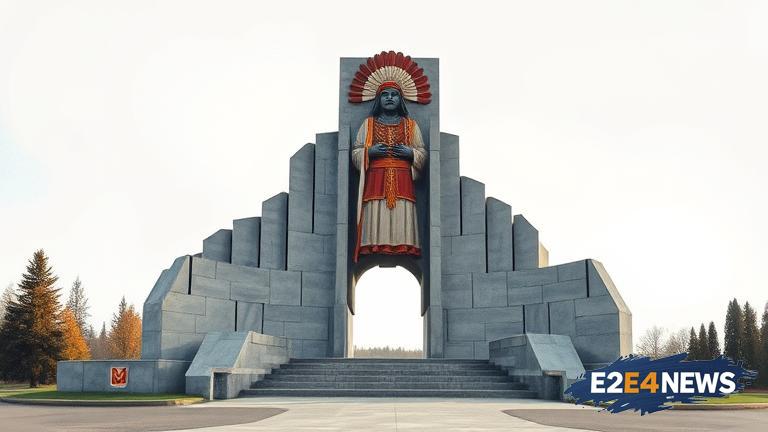The province of Manitoba is set to unveil a monument in honor of Chief Peguis, a revered Indigenous leader, in 2024. This initiative is part of a broader effort to acknowledge and celebrate the rich history and contributions of Indigenous peoples in Canada. Chief Peguis, a Saulteaux chief, played a pivotal role in the early 19th century, facilitating the establishment of the Red River Settlement, which would eventually become the city of Winnipeg. His legacy extends beyond his leadership, as he worked tirelessly to promote peace and understanding between Indigenous and European settlers. The monument, slated for completion in 2024, will serve as a testament to Chief Peguis’ enduring impact on the region’s history and a symbol of reconciliation. The project has garnered widespread support from local communities, Indigenous leaders, and government officials, who recognize the importance of preserving and honoring Indigenous heritage. This initiative is also seen as an opportunity to educate the public about the complex and often overlooked history of Indigenous peoples in Canada. By acknowledging the past and honoring figures like Chief Peguis, Canadians can work towards a more inclusive and equitable future. The monument will be designed in consultation with Indigenous communities and will feature a statue of Chief Peguis, as well as interpretive panels and other educational materials. The site will also include a garden and a walking path, providing a peaceful space for reflection and contemplation. The project is expected to cost several hundred thousand dollars, with funding provided by the provincial government and private donors. The monument will be located in a prominent public space, ensuring that it is accessible to all members of the community. The unveiling of the monument is anticipated to be a significant event, with dignitaries and community leaders in attendance. The ceremony will include traditional Indigenous ceremonies and performances, as well as speeches and remarks from notable figures. The monument will also serve as a catalyst for further reconciliation efforts, promoting dialogue and understanding between Indigenous and non-Indigenous Canadians. Furthermore, the project will provide opportunities for Indigenous artists and artisans to showcase their work, contributing to the preservation and promotion of Indigenous culture. In addition to the monument, there are plans to develop educational materials and programs, which will be integrated into school curricula and community outreach initiatives. These efforts will help to ensure that the history and legacy of Chief Peguis are not forgotten, but rather celebrated and honored for generations to come. The monument will also be a source of pride for the local community, recognizing the significant contributions that Indigenous peoples have made to the region’s history and development. As Canada continues to grapple with its complex and often fraught relationship with Indigenous peoples, the monument to Chief Peguis serves as a powerful symbol of reconciliation and a commitment to a more inclusive future. The project is a testament to the power of collaboration and community engagement, demonstrating what can be achieved when people come together to promote understanding and respect. Ultimately, the monument will stand as a lasting tribute to Chief Peguis and the Indigenous peoples who have shaped the history of Manitoba and Canada as a whole.
